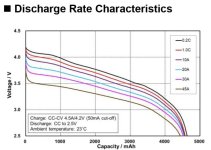The poster is asking for help and is unsure about many things. The choices are not random. There is a clear use case. It is not a random wish list.
Well maybe it's pie in the sky when it comes to the motor choices relative to the criteria.
"Bafang M635 torque sensing BBSHD or a Leaf 1500w."
- regen braking
- a controller capable of 4-5kw bursts
- dual battery setup potentially (eg 2 x 48v or 52v batteries run in parallel for double amps of nominal rating l, plus regen on dual batteries if they are paired correctly)
- a fair bit of serious hill climbing.
There's a lot of folks trying to chip in on supporting the many newbie questions. I'm going initially with reviewing the post at face value, assuming the posters have stated what they want, either in the current thread, or their other threads on the same subject, rather than go through the long Q&A. It's easier for me to read than type, so looking at the info sprinkled around in their posts is my approach. For example, if the poster want 5kW for whatever reason, I'm not questioning it.
I think the Leaf could probably fill all of the requirements, where the other two can only meet one (being able to run parallel batteries). But not enough info to tell, so I stated my preference. I bet you'd like to see an M635 build too.
The Q&A method may be preferable, but we're all just trying to help out, so I think there's room for different approaches.
"In my testing the P45B was a better performer in every way over the Molicel P42A:
The P45B had almost 9% higher capacity.
The P45B had about 33% lower DC IR (at 100% charge).
The P45B’s charge rates are 4.5A standard/13.5A max (70°C cutoff) and the P42A’s are 4.2A standard/8.4A max (60°C cutoff).
The P45B had longer run times at all discharge current levels."
I've been looking at these spec sheets so many times after reading through Eastwood's battery build thread. He's using the P42A. Any of these cells, except the 50E, could meet my needs for capacity and current capability, but I'm allergic to voltage sag. Regardless of how capable a cell/pack is, I think voltage sag is the biggest robber of performance. Is there a way to determine voltage drop of these cells using the discharge graphs provided in most spec sheets? Is it as simple as taking the state of charge and comparing the discharge curves of a low discharge scenario and a high discharge scenario, and doing the math?
I see around 0.6V between the 0.2C and the 45A curves (0.4V in the voltage range/state of charge I'm usually running my pack at), so does that mean for 20S5P, the approximate sag for the pack would be 20 x 0.6 = 12V when discharging at a 225A?
I'm going to do another review of the curves. I'm thinking the cells with the greater capability will sag less, but for me it's worth checking.





